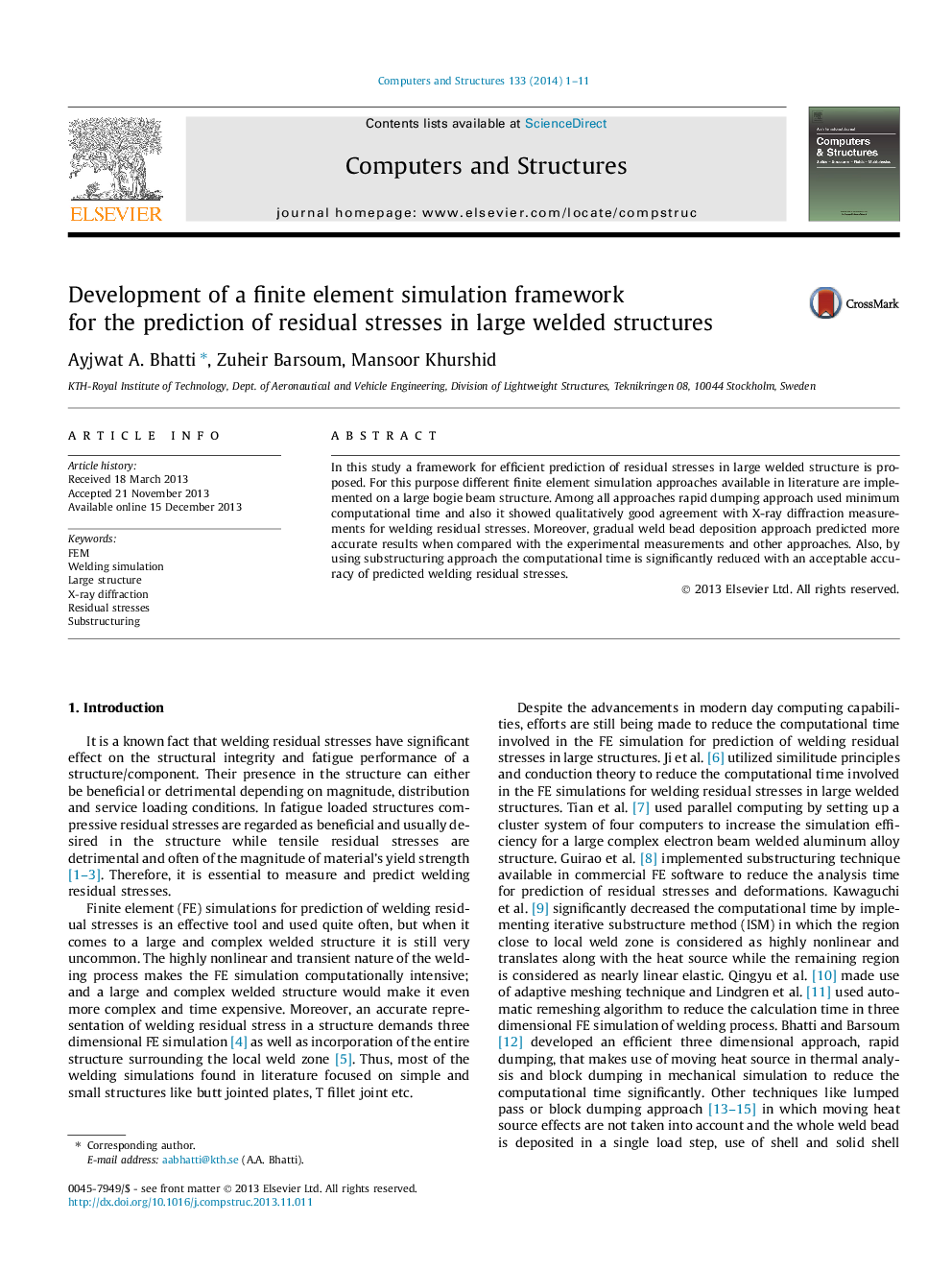| Article ID | Journal | Published Year | Pages | File Type |
|---|---|---|---|---|
| 511058 | Computers & Structures | 2014 | 11 Pages |
•FE simulation framework for prediction of residual stress in large welded structure.•Residual stresses are estimated with different approaches available in literature.•Measured residual stresses are in good agreement with predicted ones.•CPU time is reduced up to 60% compared with conventional welding simulation.
In this study a framework for efficient prediction of residual stresses in large welded structure is proposed. For this purpose different finite element simulation approaches available in literature are implemented on a large bogie beam structure. Among all approaches rapid dumping approach used minimum computational time and also it showed qualitatively good agreement with X-ray diffraction measurements for welding residual stresses. Moreover, gradual weld bead deposition approach predicted more accurate results when compared with the experimental measurements and other approaches. Also, by using substructuring approach the computational time is significantly reduced with an acceptable accuracy of predicted welding residual stresses.
